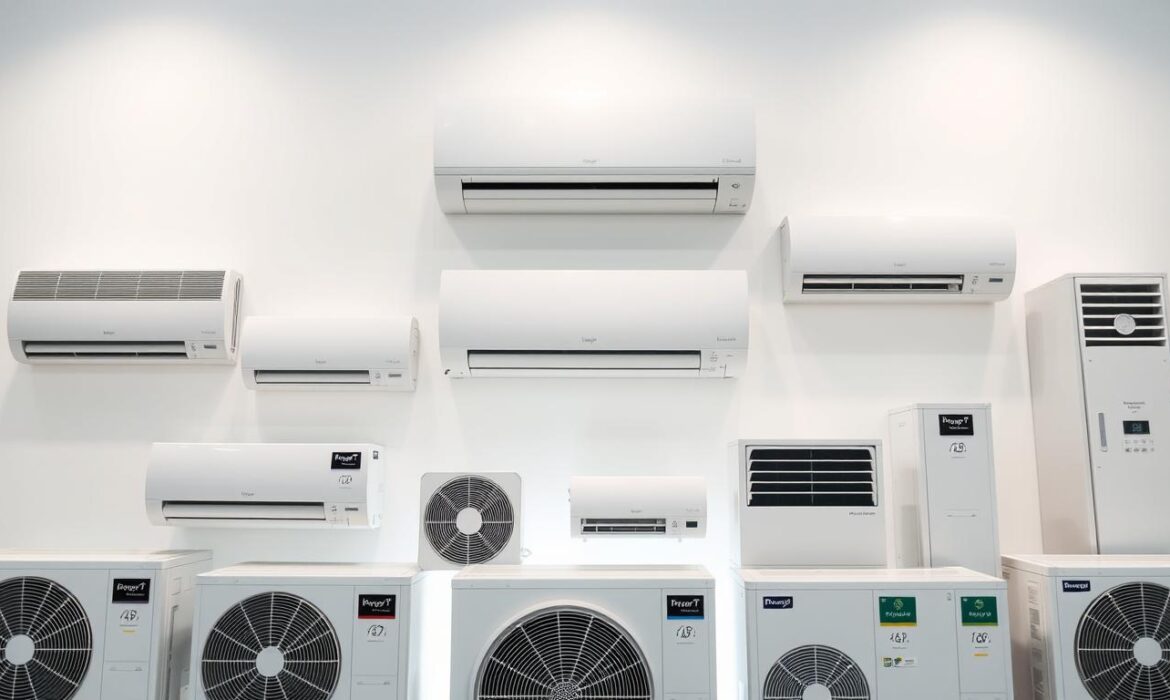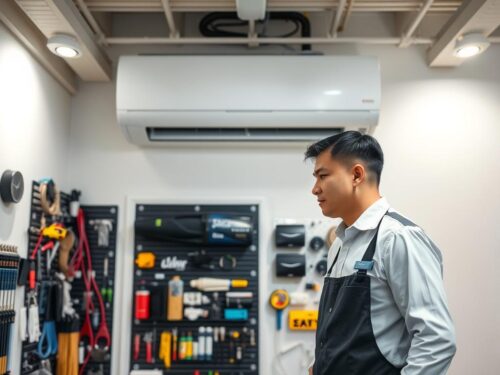Living in a tropical climate with temperatures often exceeding 30°C and humidity levels above 80%, finding the right cooling solution is essential. Air conditioners play a vital role in maintaining comfort and improving indoor air quality. With so many options available, choosing the right system can be overwhelming.
This review highlights 11 top-rated models, including the Mitsubishi Starmex, Daikin iSmile, and Panasonic XU Series. These units are known for their energy efficiency, advanced features like smart app controls, and the use of eco-friendly R32 refrigerant. Prices range from $2,999 for budget-friendly options to $5,531 for premium configurations, ensuring there’s something for every need and budget.
For those living in HDB flats, models with a 48,000 BTU capacity are ideal for 4-room units. Additionally, quality systems can last 15-20 years with proper maintenance. This guide also explores warranty support and maintenance considerations to help you make an informed decision.
Key Takeaways
- Singapore’s climate demands efficient and reliable air conditioning systems.
- Top models include Mitsubishi Starmex, Daikin iSmile, and Panasonic XU Series.
- Key features include 5-tick energy ratings and smart app controls.
- Prices range from $2,999 to $5,531, catering to various budgets.
- HDB flats often require systems with a 48,000 BTU capacity.
- Quality units can last 15-20 years with proper care.
- Maintenance and warranty options vary by brand.
Why Air Conditioning is Essential in Singapore
With midday temperatures soaring to 32°C and humidity levels hitting 84%, staying cool becomes a daily challenge. Effective cooling systems are not just about comfort—they are essential for maintaining a healthy and livable environment. Without them, the tropical climate can lead to discomfort, health issues, and even damage to your home.
Combating Singapore’s Heat and Humidity
Traditional fans can only reduce temperatures by 3-5°C, while modern air conditioning systems can cool a room by 10-15°C. This makes them far more effective in combating the intense heat. Additionally, these systems control humidity, preventing issues like mould growth, furniture warping, and damage to electronics.
Advanced features, such as Hitachi’s FrostWash technology, remove up to 93% of bacteria, ensuring cleaner air. Panasonic’s nanoe™ X technology offers 24/7 air purification, further enhancing indoor quality.
Benefits of Modern Air Conditioning Systems
Modern systems go beyond cooling. Mitsubishi units, for example, filter 99% of PM2.5 particles, reducing allergy symptoms. Daikin’s quiet operation at just 19dB improves sleep quality, while LG’s Plasmaster Ionizer+ sterilizes surfaces for a healthier home.
- Humidity control protects furniture and electronics.
- Health benefits include reduced allergens and cleaner air.
- Quiet operation enhances sleep and overall comfort.
- Multi-functional systems offer surface sterilization and air purification.
Investing in a reliable cooling system is not just about comfort—it’s about creating a healthier, more enjoyable living space.
Key Factors to Consider When Choosing an Aircon
Selecting the right cooling system requires careful consideration of several factors. From sizing to energy ratings, each aspect plays a crucial role in ensuring your home stays comfortable and efficient.
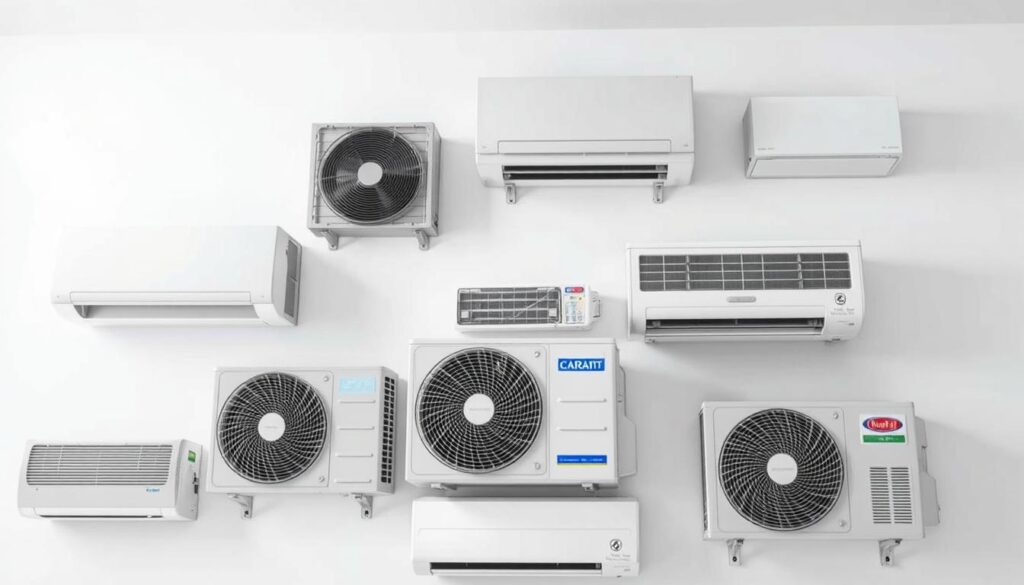
BTU Size and Room Compatibility
Choosing the correct BTU (British Thermal Unit) size is essential for effective cooling. For HDB rooms, 9K-12K BTU units are ideal for bedrooms, while living rooms may require 24K BTU systems. Use this formula to calculate your needs:
- (Room Area in sqft × 25) + (500 × Occupants)
This ensures your unit matches the space, preventing inefficiency or overworking the system.
Energy Efficiency and NEA Ratings
Energy efficiency is a key factor in reducing long-term costs. The National Environment Agency (NEA) rates systems from 1 to 5 ticks. A 5-tick unit uses 30% less energy than a 3-tick model, making it a smarter choice for sustainability and savings.
Beyond NEA ratings, consider the Coefficient of Performance (COP). Higher COP values indicate better efficiency, ensuring your system delivers maximum cooling with minimal energy use.
Installation and After-Sales Support
Proper installation is critical for optimal performance. Reputable installers like Mega Discount Store offer free HDB installation, while Gain City provides reliable service. Additionally, maintenance costs range from $80 to $150 quarterly, ensuring your system remains in top condition.
Warranty coverage also varies. For example, Mitsubishi offers a 10-year compressor warranty, while Midea provides 5-year coverage. This support ensures peace of mind and long-term reliability.
| Feature | Window Units | Multi-Split Systems |
|---|---|---|
| Price Range | $800 – $1,200 | $2,999 – $5,500 |
| Installation Complexity | Low | High |
| Energy Efficiency | Moderate | High |
| Ideal For | Small Spaces | Larger Homes |
By evaluating these factors, you can choose a cooling system that meets your needs and enhances your home’s comfort.
Top Aircon Brands in Singapore
When it comes to cooling solutions, certain brands stand out for their innovation and reliability. These companies have built a reputation for delivering systems that combine durability and advanced features, making them popular choices for homes and businesses alike.
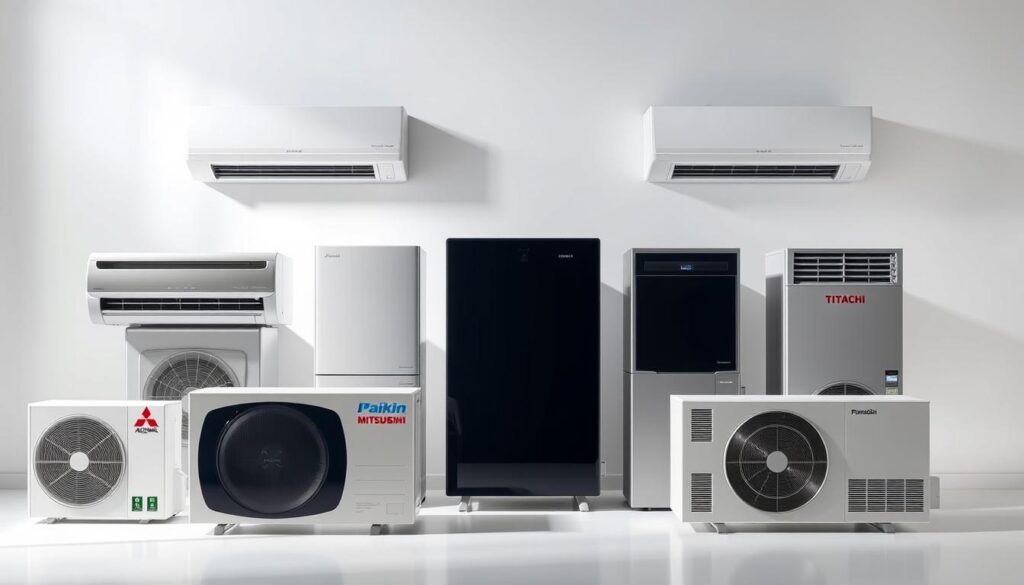
Mitsubishi Electric: Reliability and Efficiency
Mitsubishi Electric is a trusted name in the cooling industry, known for its elevator-grade compressors and long-lasting performance. With a 92% customer satisfaction rate, their systems are celebrated for lasting over 10 years with minimal issues. This makes them a top choice for those prioritizing durability and efficiency.
Daikin: Innovation and Smart Controls
Daikin leads the way with cutting-edge technology, including their Mobile Controller app that tracks energy usage. Their Intelligent Eye sensor reduces energy consumption by 27%, making their systems both eco-friendly and cost-effective. For those who value smart features, Daikin is a standout among aircon brands.
Panasonic: Air Purification and Comfort
Panasonic focuses on enhancing indoor air quality with features like nanoe™ X technology, which purifies air 24/7. Their AEROWINGS technology ensures airflow reaches up to 15 meters, providing consistent comfort. Compared to other systems like LG’s Plasmaster Ionizer+, Panasonic offers a unique blend of purification and cooling.
- Mitsubishi Electric boasts a 92% satisfaction rate for reliability.
- Daikin’s Intelligent Eye sensor cuts energy use by 27%.
- Panasonic’s nanoe™ X technology ensures cleaner air.
- Market share: Daikin (31%), Mitsubishi Electric (28%), Panasonic (19%).
- Warranty options range from 5 years standard to extended coverage.
For more insights on choosing the right system, check out this comprehensive guide.
Best Aircon Models for Singapore Homes
Finding the perfect cooling solution for your home can make a significant difference in comfort and energy savings. With advanced technology and innovative features, these top models are designed to meet the needs of modern households. Let’s explore three standout options that combine efficiency, performance, and reliability.
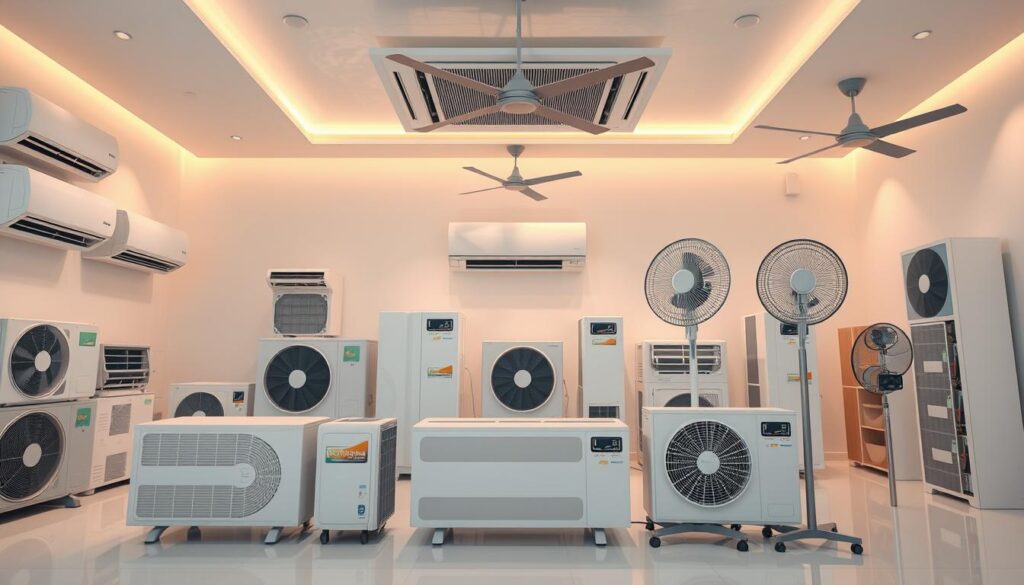
Mitsubishi Starmex R32 System 4 Aircon
The Mitsubishi Starmex is a popular choice for its quiet operation and durability. With a noise level of just 19dB, it’s ideal for bedrooms and living spaces. This system uses the eco-friendly R32 refrigerant, which has a lower global warming potential compared to older refrigerants.
Priced at $4,780 for a 9Kx2+12K+24K configuration, it’s a versatile option for larger homes. Users on Lazada rate it 4.8/5, praising its consistent performance and energy efficiency. Its advanced filtration also ensures cleaner air, making it a top pick for families.
Daikin iSmile Eco Series R32 System 4
Daikin’s iSmile Eco Series stands out for its smart features and energy-saving capabilities. It uses the R32 refrigerant, which has a GWP of 675, significantly lower than R410A’s 2,088. This makes it an environmentally friendly choice.
With a 5-tick energy efficiency rating, it helps reduce electricity bills. The Mobile Controller app allows users to track energy usage, adding convenience. In sleep mode, it operates at 22dB, ensuring a peaceful environment. Its user rating of 4.6/5 reflects its reliability and innovation.
Panasonic XU Series R32 System 4 Aircon
The Panasonic XU Series combines powerful cooling with advanced air purification. Its nanoe™ X technology neutralizes 99.97% of viruses, according to lab tests. This makes it a great choice for those prioritizing indoor air quality.
With a 24K BTU unit, it can cool a 40sqm living room in just 8 minutes. The Comfort Cloud app provides diagnostics and control, enhancing user experience. Its blend of performance and purification makes it a standout model in the market.
- Mitsubishi Starmex: Quiet operation at 19dB and eco-friendly R32 refrigerant.
- Daikin iSmile: Smart energy tracking and low GWP refrigerant.
- Panasonic XU Series: Advanced air purification and rapid cooling.
For more insights on choosing the right cooling system, check out this comprehensive guide.
Energy-Efficient Aircon Options
Energy-efficient cooling solutions are becoming a necessity for modern homes, especially in regions with high humidity and heat. These systems not only reduce electricity bills but also contribute to a greener environment. Let’s explore the technologies and models that make this possible.
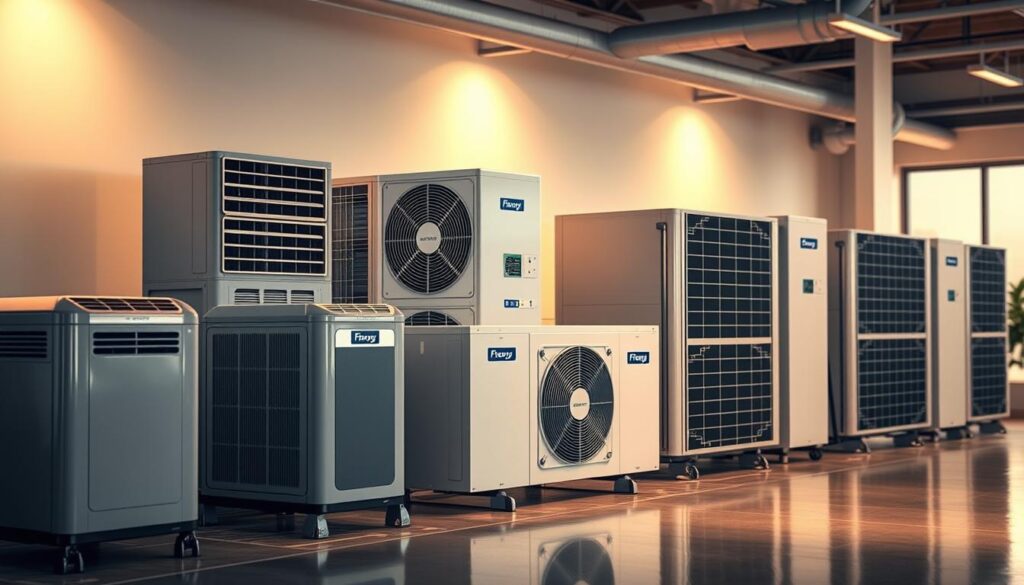
Inverter Technology Explained
Inverter technology is a game-changer for energy efficiency. Unlike traditional units that turn on and off repeatedly, inverter systems adjust their speed to maintain a consistent temperature. This reduces energy consumption by up to 40%, saving $280-$400 annually, according to SP Group estimates.
There are two main types of inverter systems: dual inverter and hybrid inverter. Dual inverter units, like those from LG, offer precise temperature control and quieter operation. Hybrid inverters, such as Toshiba’s models, combine the benefits of inverter and non-inverter technologies for enhanced performance.
Top 5-Tick Rated Aircons
The National Environment Agency (NEA) rates cooling systems from 1 to 5 ticks based on their energy efficiency. A 5-tick unit uses 30% less energy than a 3-tick model, making it a smart long-term investment. Here are some top-rated options:
- Mitsubishi Starmex: Known for its quiet operation and eco-friendly R32 refrigerant, this model has a SEER rating of 18.2.
- Daikin iSmile: Features smart energy tracking and a low GWP refrigerant, making it both eco-friendly and cost-effective.
- Midea All Easy Pro: A budget-friendly option with a SEER rating of 16.5, priced at $2,999.
“Switching to a 5-tick model can save up to $400 annually, making it a worthwhile investment for any household.”
| Model | SEER Rating | Price |
|---|---|---|
| Mitsubishi Starmex | 18.2 | $4,780 |
| Daikin iSmile | 17.5 | $4,200 |
| Midea All Easy Pro | 16.5 | $2,999 |
To calculate the payback period for upgrading to an energy-efficient model, use this formula: (Price Difference) / (Annual Savings). For example, if a 5-tick unit costs $1,000 more but saves $400 annually, the payback period is 2.5 years.
Smart Aircon Features to Look For
Modern cooling systems are evolving with advanced features that enhance convenience and efficiency. These innovations not only improve user experience but also make managing your home environment easier. Let’s explore the key smart features to consider when choosing a system.
WiFi Connectivity and Mobile Apps
WiFi-enabled systems allow you to control your cooling unit from anywhere using a mobile app. For example, LG’s ThinQ app is compatible with Google Home and Alexa, offering seamless integration with your smart home setup. Daikin’s Smart-Fence geofencing feature adjusts settings based on your location, ensuring optimal comfort when you arrive home.
Different brands offer varying app functionalities. Mitsubishi provides basic controls, while Samsung’s app includes detailed energy reports. This makes it easier to monitor and optimize energy usage, saving you money in the long run.
AI Scheduling and Voice Control
AI-powered features are revolutionizing how cooling systems operate. Toshiba’s occupancy detection adjusts settings based on room activity, while Panasonic’s humidity adaptation ensures consistent comfort. These smart control options make your system more intuitive and efficient.
Voice command compatibility is another standout feature. Samsung’s Bixby and LG’s Google Assistant allow you to adjust settings with simple voice commands. This hands-free control adds convenience, especially when you’re busy or away from your phone.
- Mitsubishi offers basic app controls, while Samsung provides energy reports.
- Voice commands are supported by Bixby (Samsung) and Google Assistant (LG).
- AI features include Toshiba’s occupancy detection and Panasonic’s humidity adaptation.
- Security protocols vary, with Daikin using WPA3 encryption and Midea using WPA2.
- Smart home integration costs range from $0 to $150 for hubs.
| Feature | Mitsubishi | Daikin | Panasonic |
|---|---|---|---|
| App Functionality | Basic Controls | Geofencing | Humidity Adaptation |
| Voice Control | Not Supported | Google Assistant | Google Assistant |
| AI Features | None | Occupancy Detection | Humidity Adaptation |
Investing in a system with these features ensures a more comfortable and efficient home environment. Whether you prioritize app functionality, voice control, or AI scheduling, there’s a solution to meet your needs.
Budget-Friendly Aircon Choices
For those looking to stay cool without breaking the bank, budget-friendly cooling systems offer a practical solution. With a wide range of options available, you can find a unit that fits your needs and budget. Whether you’re considering a full system or a compact window unit, there’s something for everyone.
Midea All Easy Pro AI System 4
The Midea All Easy Pro AI System 4 is a standout choice for its affordability and performance. Priced at $2,999, it offers a BTU/$ ratio of 16.3, making it a cost-effective option for larger spaces. Compared to Mitsubishi’s $4,780 equivalent, Midea provides excellent value without compromising on quality.
This system features a 4-tick energy rating, balancing efficiency and price. While it may not match the energy savings of a 5-tick model, it’s a great choice for those prioritizing upfront costs. Its AI technology ensures optimal performance, making it a reliable option for everyday use.
Other Affordable Models Worth Considering
If you’re looking for even more affordable options, window units from brands like Panasonic and Carrier are worth exploring. Priced between $599 and $899, these units are ideal for smaller spaces or single rooms. They’re easy to install and maintain, making them a popular choice for renters or those on a tight budget.
Certified refurbished models are another great way to save. Many come with 2-year warranties, offering peace of mind at a fraction of the price. Additionally, retailers like Courts offer 0% interest payment plans for up to 12 months, making it easier to manage costs.
“Investing in a budget-friendly system doesn’t mean sacrificing quality. With the right choice, you can enjoy comfort and savings.”
| Model | Price | BTU/$ Ratio |
|---|---|---|
| Midea All Easy Pro AI System 4 | $2,999 | 16.3 |
| Panasonic Window Unit | $699 | 12.5 |
| Carrier Window Unit | $599 | 11.8 |
To reduce long-term costs, consider DIY maintenance tips like cleaning filters regularly and checking for leaks. These simple steps can extend the lifespan of your system and minimize service expenses. For more guidance on choosing the right cooling solution, check out this comprehensive guide.
Conclusion: Finding the Best Aircon for Your Needs
Choosing the right cooling system for your home doesn’t have to be overwhelming. Focus on top picks like Mitsubishi for reliability, Daikin for advanced tech, and Panasonic for superior air quality. These brands cater to different needs, ensuring you find the perfect fit.
Proper sizing is crucial. Use HDB BTU guidelines to match your space and avoid inefficiency. For premium models, consider a 5-year extended warranty for added peace of mind. Comparing quotes from authorized dealers can also help you secure the best service and pricing.
Finally, plan installations during non-peak seasons like February to April. This ensures smoother scheduling and often better deals. With these tips, you’re well-equipped to make an informed choice for your home in Singapore.

